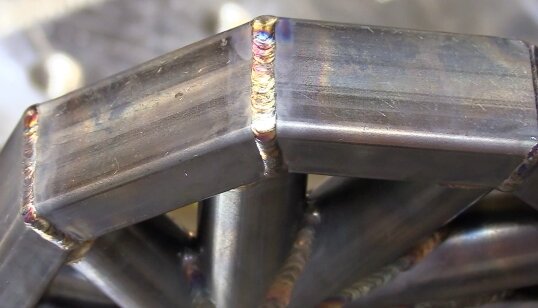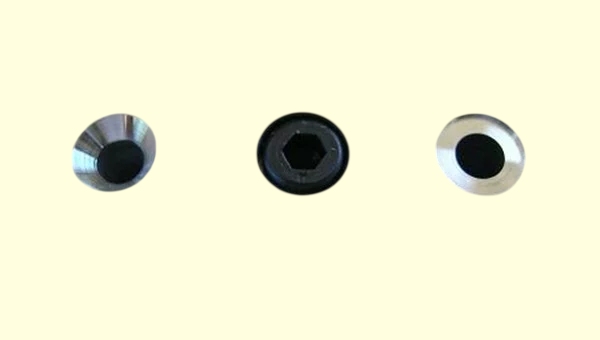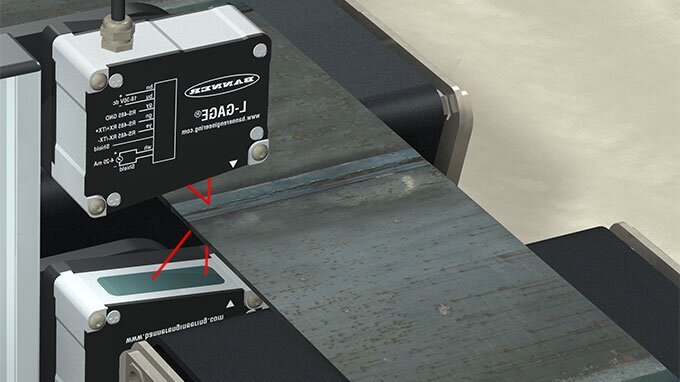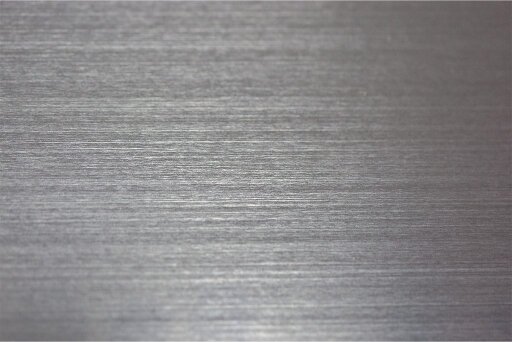التطويق هو عملية تصنيع آلي تستخدم لإزالة المواد من الشُّغْلَة. وهي فعالة وكفؤة ولكنها قد تبدو معقدة. لا يدرك العديد من المصنعين النطاق الكامل لتطبيقاتها وفوائدها. دعنا نستكشف هذه العملية حتى تتمكن من تحديد كيفية ملاءمتها لمشروعك التالي.
يوفر التطويق العديد من الفوائد، من الدقة إلى السرعة، مما يجعله مثاليًا للتصنيع بكميات كبيرة. وهي مفيدة بشكل خاص للأجزاء التي تتطلب أشكالاً معقدة، والتي قد يكون من الصعب أو يستغرق إنتاجها وقتًا طويلاً باستخدام طرق أخرى. دعونا نلقي نظرة أعمق على كيفية عمل التطرق ومزاياه.

ما هو التطويق؟
التطرق هو عملية تصنيع آلي تزيل المواد من الشُّغْلَة باستخدام أداة خاصة تسمى الطرَّاقة. يحتوي الطرّاسة على سلسلة من حواف القطع، كل حافة أكبر قليلاً من سابقتها، لإزالة المواد على خطوات. تُستخدم في المهام الدقيقة، مثل التشكيل والتحجيم وإنشاء ميزات تفصيلية.
واعتمادًا على الماكينة المستخدمة، يمكن دفع الطرّاسة أو سحبها عبر المادة. أثناء تحركها، تقوم أسنان الطرّاسة بقطع المادة. تم تصميم الأسنان لإزالة المادة تدريجياً وتشكيلها حتى تصل إلى الشكل المطلوب.
المكونات الرئيسية لماكينة الترقيع
تحتوي ماكينة التطرق على العديد من المكونات الرئيسية التي تقوم بعملية التصنيع الآلي. وتشمل أهم الأجزاء ما يلي:
- البروش: هذه هي أداة القطع المستخدمة في العملية. وعادةً ما يكون لها أسنان أكبر تدريجياً لإزالة المواد على مراحل.
- قطعة العمل: هذه هي المادة التي يتم تشكيلها أو قطعها. وتبعاً للاستخدام، يمكن أن تكون مصنوعة من معادن أو سبائك مختلفة.
- سرير الماكينة: يقوم السرير بتثبيت قطعة العمل في مكانها بينما تتحرك الطرّاسة من خلاله.
- آلية القيادة قم بتشغيل الطرّاسة مما يسمح لها بالدفع أو السحب خلال قطعة العمل.
- الدليل: يساعد ذلك في الحفاظ على محاذاة الطرّاسة ويضمن إجراء عمليات قطع متسقة.
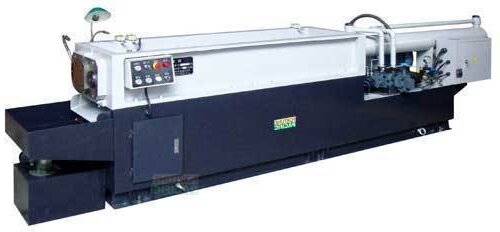
كيف يعمل التطويق؟
يعتبر التطرق عملية بسيطة، ولكن كل خطوة مهمة لتحقيق الدقة والكفاءة. فيما يلي شرح تفصيلي لكيفية عمل عملية التطرق:
تحضير قطعة العمل
الخطوة الأولى هي تأمين قطعة العمل. وعادةً ما يتم تثبيتها على سرير الماكينة لمنع الحركة أثناء التطريق. تتم محاذاة الشُّغْلَة بعناية مع الطرّاسة لضمان الدقة.
اختيار البروش المناسب
بعد ذلك، يتم اختيار الدبابيس المناسبة للمهمة. تأتي الدبابيس في أنماط وأحجام مختلفة، كل منها مصمم لقطع أو أشكال محددة.
وضع البروش
يتم بعد ذلك تركيب الطرّاسة على الماكينة. اعتمادًا على إعداد الماكينة، يمكن إعدادها إما أفقيًا أو رأسيًا. يتم وضع أسنان الطرّاسة في بداية الماكينة وتكون جاهزة للقطع.
تحريك البرشمة خلال قطعة العمل
يتم سحب الطرّاسة أو دفعها عبر المادة. أثناء تحركها، تقوم الأسنان بإزالة المواد خطوة بخطوة، مع قطع كل سن أكثر قليلاً من السن التي تسبقها. تعمل هذه العملية التدريجية على تشكيل قطعة العمل بالشكل المطلوب.
فحص قطعة العمل
وأخيرًا، بعد التطرقة، يتم فحص قطعة العمل للتأكد من جودتها. يضمن هذا الفحص استيفاء القطع للمعايير وصحة الشكل.
أنواع التطويق
يمكن تصنيف التثقيب إلى أنواع مختلفة بناءً على كيفية تحرك الطرّاسة وقطعة العمل. تم تصميم كل نوع لمهام محددة. فيما يلي الأنواع الرئيسية للطرز:
التثقيب الخطي
النوع الأكثر شيوعًا هو التطرق الخطي. في هذه العملية، يتم سحب أو دفع الطرّاسة من خلال قطعة العمل في خط مستقيم. وغالبًا ما تُنشئ هذه الطريقة ميزات داخلية وخارجية، مثل الثقوب أو المفاتيح أو الشقوق.
التطرق الخطي مثالي للمهام التي تتطلب دقة عالية وإزالة المواد بكفاءة. وهي تستخدم على نطاق واسع في الإنتاج الضخم لأنها سريعة ومتسقة.
التثقيب الدوار
يتضمن التطرق الدوار، الذي يُطلق عليه أيضًا "التطرق المتذبذب"، تدوير الطرَّاز بزاوية أثناء تغذية قطعة العمل. على عكس التطريق الخطي، يستخدم التطريق الدوار الدوراني الدوران لإنشاء الأشكال. ويستخدم بشكل أساسي لإنشاء أشكال متعددة الأضلاع، مثل الأشكال السداسية أو المربعات، في وسط قطعة العمل.
التطريق الدوار الداخلي مقابل التطريق الدوار الخارجي
- الترقيع الدوارة الداخلية: تستخدم هذه الطريقة طرّاسة دوارة لقطع الأشكال داخل قطعة العمل، مثل ثقب داخلي سداسي الشكل. يدور الطرّاسة أثناء إدخالها في الثقب لإنشاء الشكل المطلوب. يشيع استخدام هذا النوع للأجزاء التي يجب أن تتناسب مع مكونات أخرى، مثل البراغي أو الصواميل.
- التثقيب الدوارة الخارجية: يتم استخدام الطرّاسة لقطع الأشكال الخارجية، مثل التشكيل السداسي أو المربع على الجزء الخارجي لقطعة العمل. وهي تستخدم عادةً لصنع أجزاء مثل المثبتات أو عناصر الماكينة التي تحتاج إلى ميزات خارجية محددة.
التطريق السطحي
التطريز السطحي هو عملية تتحرك فيها الطرّاسة على سطح قطعة العمل لإزالة المواد، مما يخلق سطحًا مسطحًا أو محددًا. تُستخدم عادةً لإنتاج أسطح مسطحة أو لتحقيق تشطيبات سطحية محددة.
وهي مفيدة بشكل خاص عند الحاجة إلى دقة عالية ولمسة نهائية ناعمة. اعتمادًا على متطلبات الجزء، يمكن استخدام هذه الطريقة لكل من الأشكال الداخلية والخارجية.
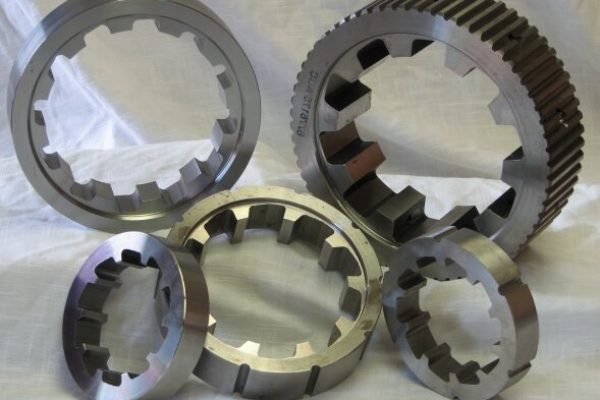
مزايا التطويق
يوفر التطرق العديد من الفوائد، مما يجعله خيارًا شائعًا لتصنيع الأجزاء الدقيقة في مختلف الصناعات. فيما يلي المزايا الرئيسية لاستخدام التطرق:
الانضباط و الدقة
يوفر التطريق دقة ودقة عالية، مما يجعله مثاليًا للمهام التي تتطلب تفاوتات ضيقة. تضمن حركة القطع التدريجي أن الشكل النهائي يفي بالمواصفات الدقيقة.
السرعة والكفاءة
التفريز بالطرز هو عملية تصنيع آلي سريعة تنتج القِطع بسرعة. بمجرد إعداد الطرَّازة، يمكن إجراء عمليات قطع متعددة في مسار واحد.
براعة في المواد والشكل
التطريق متعدد الاستخدامات للغاية. فهو يعمل مع العديد من المواد، من المعادن اللينة إلى السبائك الأكثر صلابة. يمكن للخرز بالخرز بالطرز معالجة احتياجات التصنيع المختلفة، سواءً كان ذلك لإنشاء أشكال أسطوانية أو مربعة أو سداسية الشكل.
الحد الأدنى من إنتاج النفايات
تكون عملية إزالة المواد دقيقة، حيث تقوم ماكينة التطريز بقطع المناطق المطلوبة فقط. وهذا يقلل من كمية المواد الزائدة التي قد يتم التخلص منها بخلاف ذلك.
أنواع البروشات
تأتي أدوات التطويق في أنواع مختلفة، كل منها مناسب لمهام محددة. دعونا نلقي نظرة على أكثر أنواع أدوات التثقيب شيوعًا، كل منها مصمم لتطبيقات وعمليات معينة.
دبابيس من نوع الدفع
تم تصميم الدبابيس من نوع الدفع للدفع خلال المادة أثناء عملية القطع. عادةً ما تكون قطعة العمل ثابتة، وتتحرك الطرّاسة من خلالها، وتقوم بإزالة المواد.
غالبًا ما يُستخدم هذا النوع من الطرّاسة في العمليات التي تتطلب قطعًا مستقيمًا وخطيًا، مثل إنشاء ثقوب أو فتحات. يتم استخدامه بشكل عام في ماكينات التطريز الأفقية حيث تتحرك الطرّاسة في مسار مستقيم.
دبابيس من نوع السحب
تعمل الدبابيس من نوع السحب من خلال سحب الدبابيس من خلال الشُّغْلَة بدلاً من دفعها. يسمح ذلك بتحكم أفضل وإجهاد أقل على حواف القطع، مما يجعلها مثالية للقطع الأكثر تعقيدًا والأشكال المعقدة.
يشيع استخدام التطريق من نوع السحب، حيث يتحرك الطرَّاز عموديًا، في ماكينات التطريق العمودية. وغالبًا ما تُستخدم هذه الدبابيس للتطريز بالطرز ذات الفتحات العميقة أو عند الحاجة إلى إزالة مواد أكبر.
بروشات التغذية المستمرة
صُممت دبابيس التغذية المستمرة لتعمل بحركة ثابتة ومتواصلة. تُستخدم لماكينة القِطع بأقل قدر من التوقف المؤقت أو التوقف، مما يضمن إنتاجًا عالي السرعة.
تُعد دبابيس التغذية المستمرة مناسبة للإنتاج بكميات كبيرة، حيث إنها تزيد من الكفاءة من خلال الحفاظ على عملية قطع ثابتة. وغالبًا ما تُستخدم لقطع الملامح الطويلة والمتسقة مثل الفتحات أو الممرات الرئيسية في مواد مختلفة.
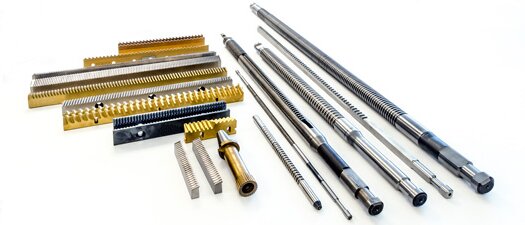
المواد المستخدمة في التطريق
التطرق هو عملية متعددة الاستخدامات تعمل مع مجموعة متنوعة من المواد. فيما يلي بعض المواد الشائعة المستخدمة في التطرق:
الصلب وسبائك الصلب
يشيع استخدام الفولاذ، وخاصة سبائك الفولاذ، في التطرق بسبب قوته ومتانته. ويشيع استخدامه في صناعات مثل صناعة السيارات والفضاء، حيث تكون الدقة والمتانة العالية ضرورية.
الألومنيوم
الألومنيوم مادة خفيفة الوزن معروفة بقابليتها الممتازة للتشغيل الآلي، مما يجعلها خيارًا شائعًا للتثقيب. وهي مفيدة بشكل خاص في صناعات مثل صناعة الطيران والسيارات والإلكترونيات، حيث تكون هناك حاجة إلى قطع خفيفة الوزن ذات دقة عالية.
نحاس وبرونز
النحاس والبرونز من المعادن غير الحديدية المعروفة بمقاومتها للتآكل. يسمح التطريق بالنحاس الأصفر والبرونز للمصنعين بإنشاء قطع دقيقة ذات تشطيبات ناعمة.
الحديد الزهر
يُستخدم الحديد الزهر على نطاق واسع في التطرق بسبب قابليته الممتازة للسبك والتشغيل الآلي. ويُستخدم عادةً في صناعات السيارات والآلات الثقيلة، حيث يجب أن تتحمل الأجزاء إجهادًا وتآكلًا عاليًا.
الترقيع في الصناعات المختلفة
يعد التطريق أمرًا أساسيًا في مختلف الصناعات، حيث يوفر حلولاً فعالة ودقيقة للأجزاء المعقدة. فيما يلي كيفية تطبيق التطريق في قطاعات مختلفة:
تصنيع السيارات
في صناعة السيارات، يعمل التطرق على إنشاء ميزات دقيقة ومفصلة للغاية في الأجزاء مثل التروس والمفاتيح و الأعمدة. تضمن دقة التثقيب أن تتناسب الأجزاء مع بعضها البعض بشكل مثالي، مما يحسن أداء السيارة وسلامتها.
الفضاء والطيران
يشيع استخدام التثقيب في مجال الطيران والفضاء لصنع الأجزاء الحرجة مثل شفرات التوربينات والتروس والمكونات المعقدة الأخرى. وهو يسمح للمصنعين بإنشاء أشكال معقدة ذات تفاوتات ضيقة مما يجعلها مثالية لتطبيقات الفضاء الجوي.
إنتاج الأجهزة الطبية
في تصنيع الأجهزة الطبية، حيث تكون الدقة والنظافة أمرًا بالغ الأهمية، يعد التطرق أمرًا حيويًا في تشكيل المكونات مثل الأدوات الجراحية والغرسات و المرفقات. تضمن دقة التثقيب أن تفي الأجزاء بالمعايير التنظيمية الصارمة المطلوبة في المجال الطبي.
الآلات والمعدات الثقيلة
يُستخدم التثقيب على نطاق واسع في الآلات والمعدات الثقيلة، حيث تكون هناك حاجة إلى قطع كبيرة ومتينة. وغالبًا ما يتم تطريز المكونات مثل كتل المحركات، والتروس، والأعمدة لتحقيق الشكل الصحيح والدقة.
استكشاف مشاكل الترقق الشائعة وإصلاحها
يعتبر التطرق عملية تصنيع آلي فعالة للغاية، ولكن يمكن أن تصاحبها تحديات مثل أي طريقة تصنيع. فيما يلي بعض المشاكل الشائعة في عملية التطريق وكيفية معالجتها:
مشاكل تآكل الأدوات وعمر الأداة
وبمرور الوقت، يمكن أن تصبح حواف القطع في الطرّاسة باهتة، مما يؤثر على جودة القطع ويزيد من أزمنة الدورات. ويمكن أن يؤدي ذلك إلى تشطيبات سطحية رديئة وعدم دقة الأبعاد.
عمليات الفحص والصيانة المنتظمة ضرورية لإطالة عمر الأداة. يمكن أن يساعد استخدام سائل التبريد المناسب واختيار الدبابيس المصنوعة من مواد متينة وعالية الجودة في تقليل التآكل.
العيوب الشائعة في الأجزاء المثقوبة
يمكن أن تظهر عيوب التثقيب بعدة طرق، مثل التشطيبات السطحية غير المستوية أو عدم دقة الأبعاد أو النتوءات على حواف القِطع. غالبًا ما يتسبب الإعداد غير الصحيح للأداة أو معلمات القطع الخاطئة أو عدم كفاية تدفق سائل التبريد في حدوث هذه المشكلات.
للحد من العيوب، تأكد من محاذاة الأداة بشكل صحيح، واستخدام سائل التبريد بشكل متناسق، ومعدل التغذية الصحيح للمادة. يمكن أن يساعد فحص القِطع بانتظام أثناء الإنتاج في اكتشاف العيوب مبكرًا ومنع حدوث المزيد من المشاكل.
حلول لتحسين كفاءة التطريق
يجب النظر في عدة طرق لجعل عملية التطرق أكثر كفاءة. ويتمثل أحد العوامل الرئيسية في تحسين معلمات القطع الخاصة بالطرّاسة على المواد وهندسة القِطع. كما أن الحفاظ على حدة الطرّاسة وصيانتها بشكل جيد سيقلل أيضًا من الحاجة إلى تغيير الأدوات بشكل متكرر وتقليل وقت التعطل.
يعد استخدام سوائل القطع عالية الجودة أمرًا بالغ الأهمية لتبريد الأداة وقطعة العمل. فهو يساعد على تقليل تراكم الحرارة ويمنع التصاق المواد بحواف القطع.
خاتمة
التطويق هو عملية تصنيع آلي دقيقة تُستخدم لإنشاء أشكال وميزات محددة في الشُّغْلَة. وهي فعالة للغاية لإنتاج أجزاء معقدة ودقيقة في مواد مختلفة. يمكن للمصنعين تحسين الكفاءة وضمان نتائج عالية الجودة من خلال معالجة المشاكل الشائعة في عملية التطريق مثل تآكل الأدوات والعيوب.
هل أنت مهتم بمعرفة المزيد أو مناقشة كيف يمكن أن يفيد التطرق في مشروعك القادم؟ اتصل بنا اليوم للحصول على مشورة الخبراء والحلول المصممة خصيصاً لتلبية احتياجاتك!
مهلا، أنا كيفن لي

على مدى السنوات العشر الماضية، كنت منغمسًا في أشكال مختلفة من تصنيع الصفائح المعدنية، وشاركت رؤى رائعة هنا من تجاربي عبر ورش العمل المتنوعة.
ابقى على تواصل

كيفن لي
لدي أكثر من عشر سنوات من الخبرة المهنية في تصنيع الصفائح المعدنية، وتخصصت في القطع بالليزر، والثني، واللحام، وتقنيات معالجة الأسطح. كمدير فني في شنغن، أنا ملتزم بحل تحديات التصنيع المعقدة ودفع الابتكار والجودة في كل مشروع.

